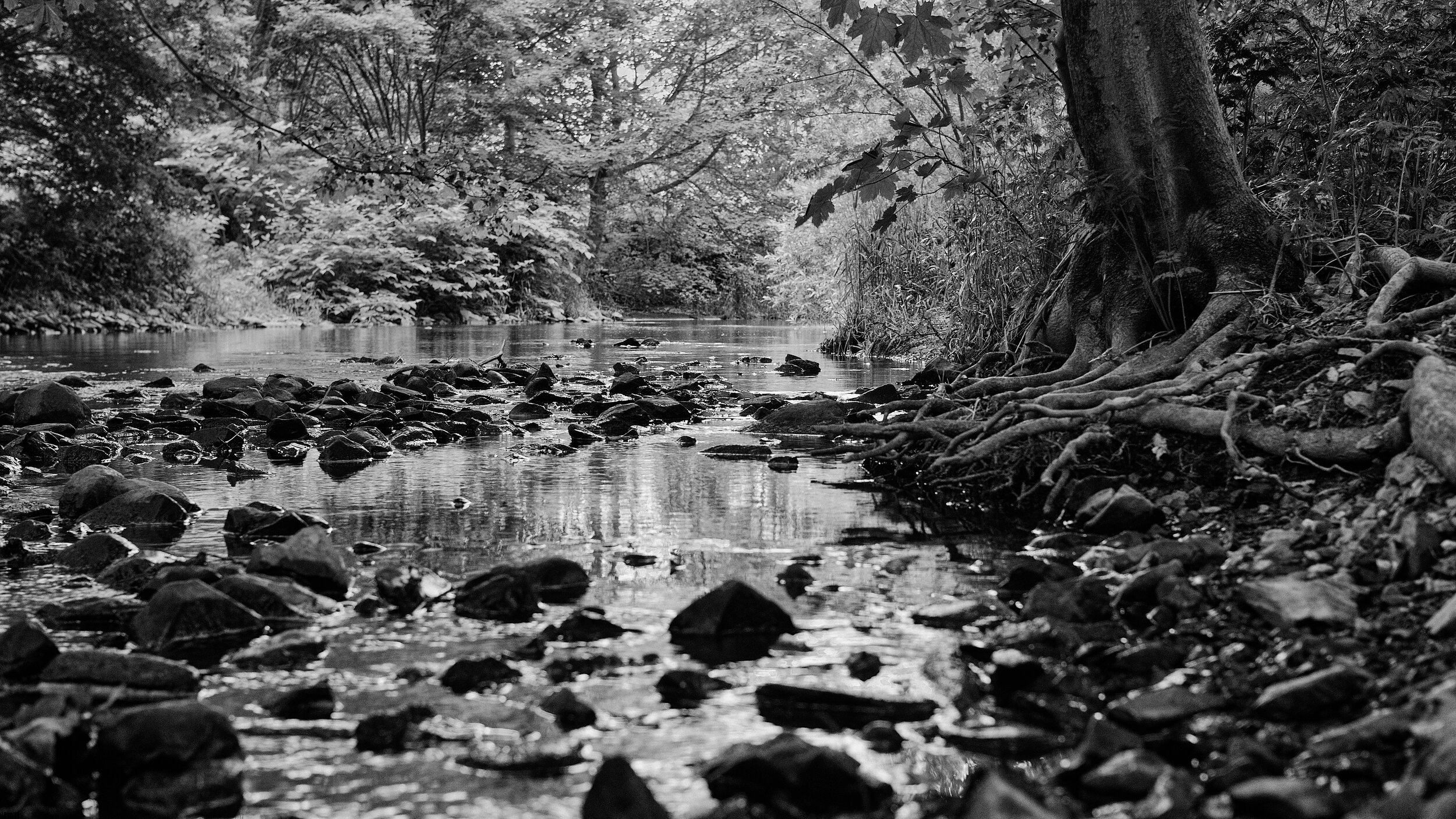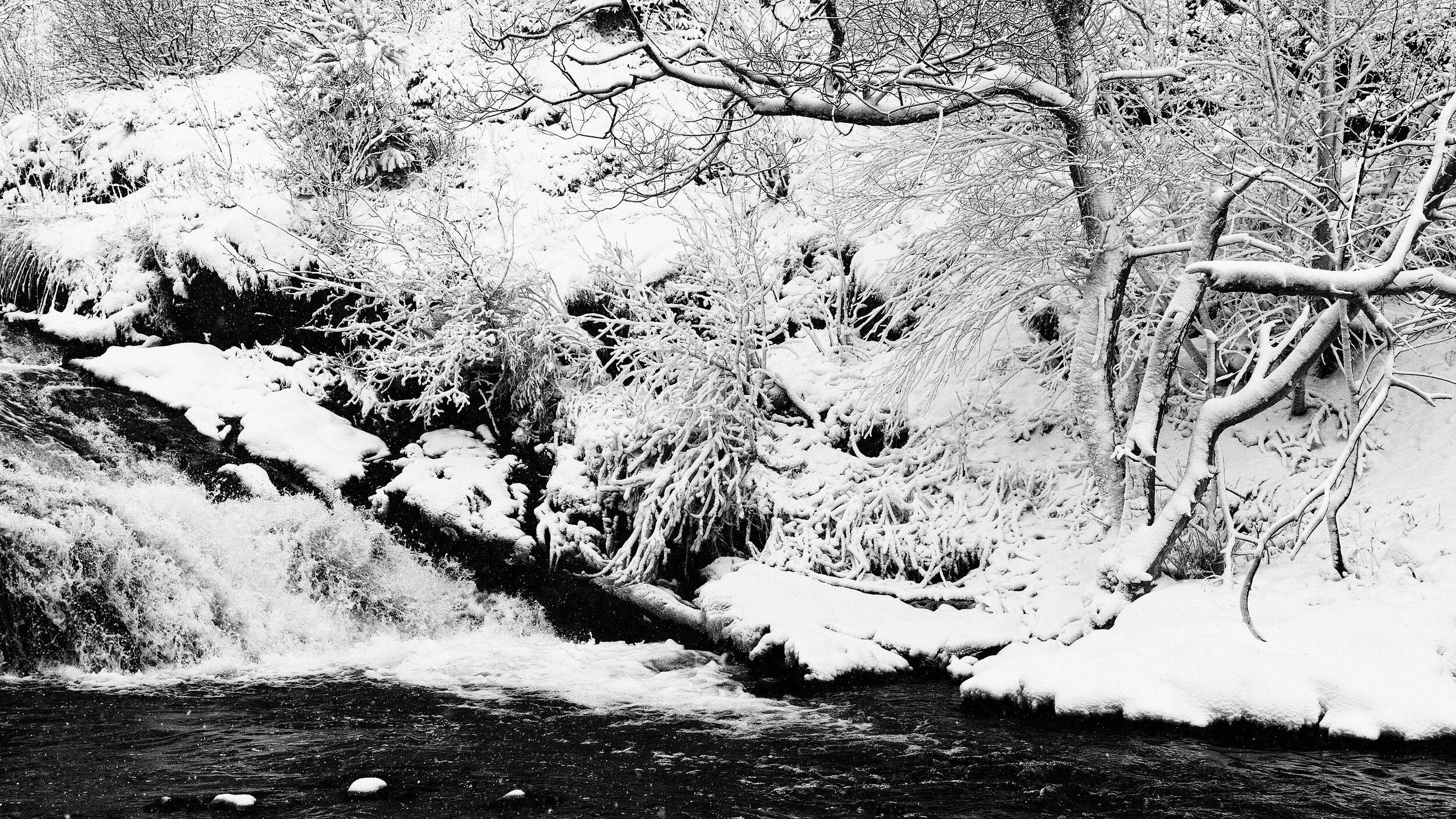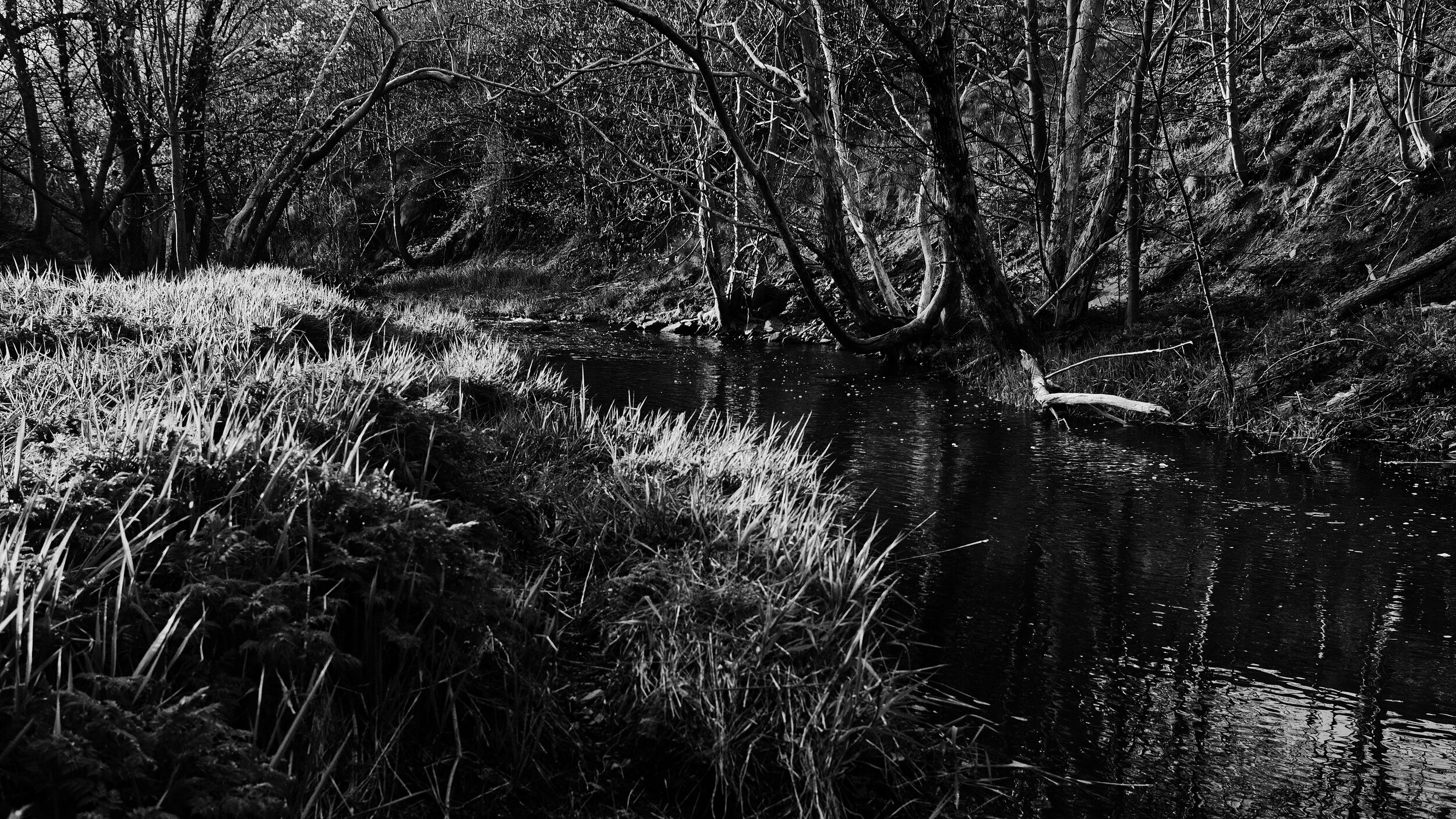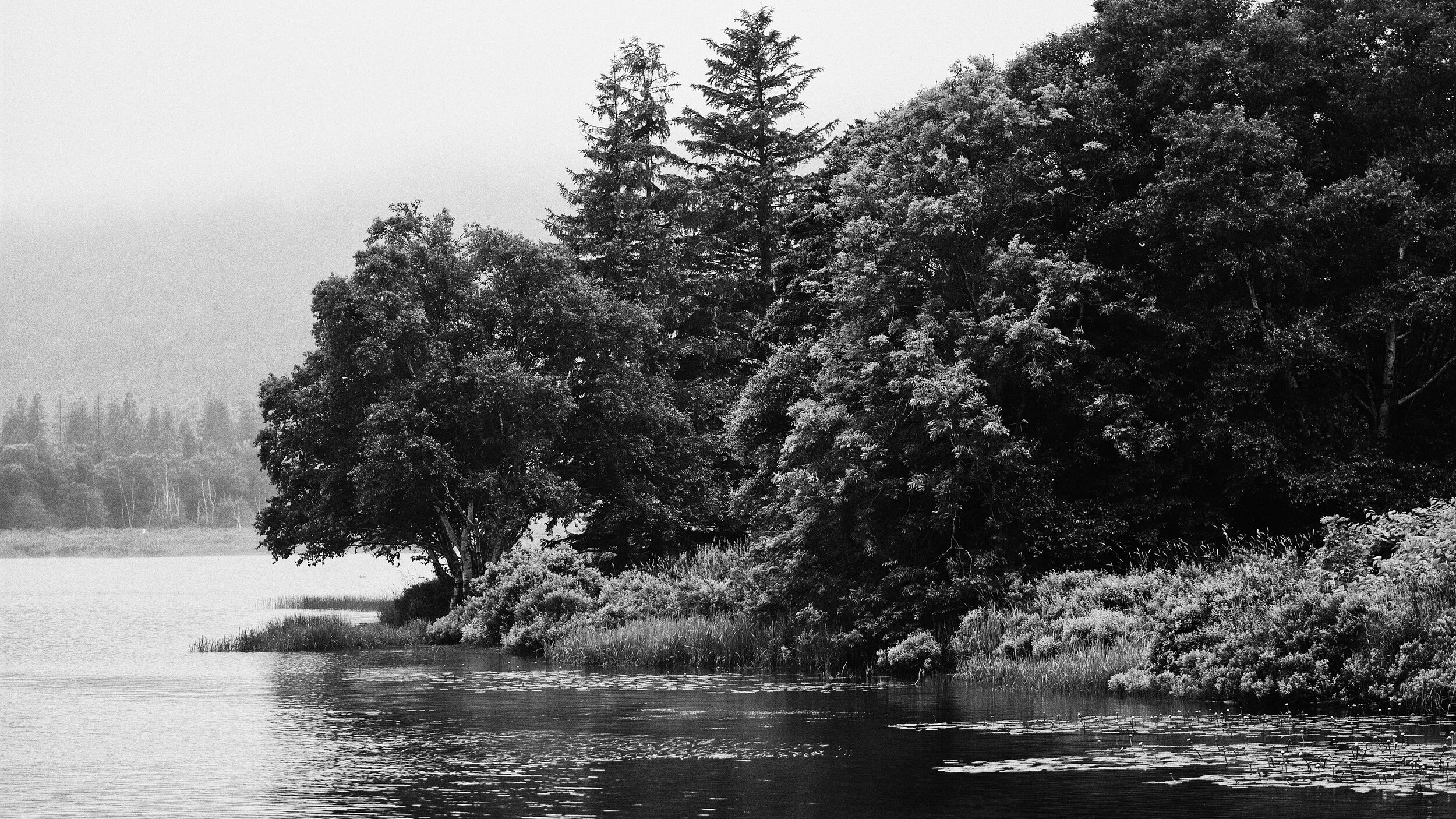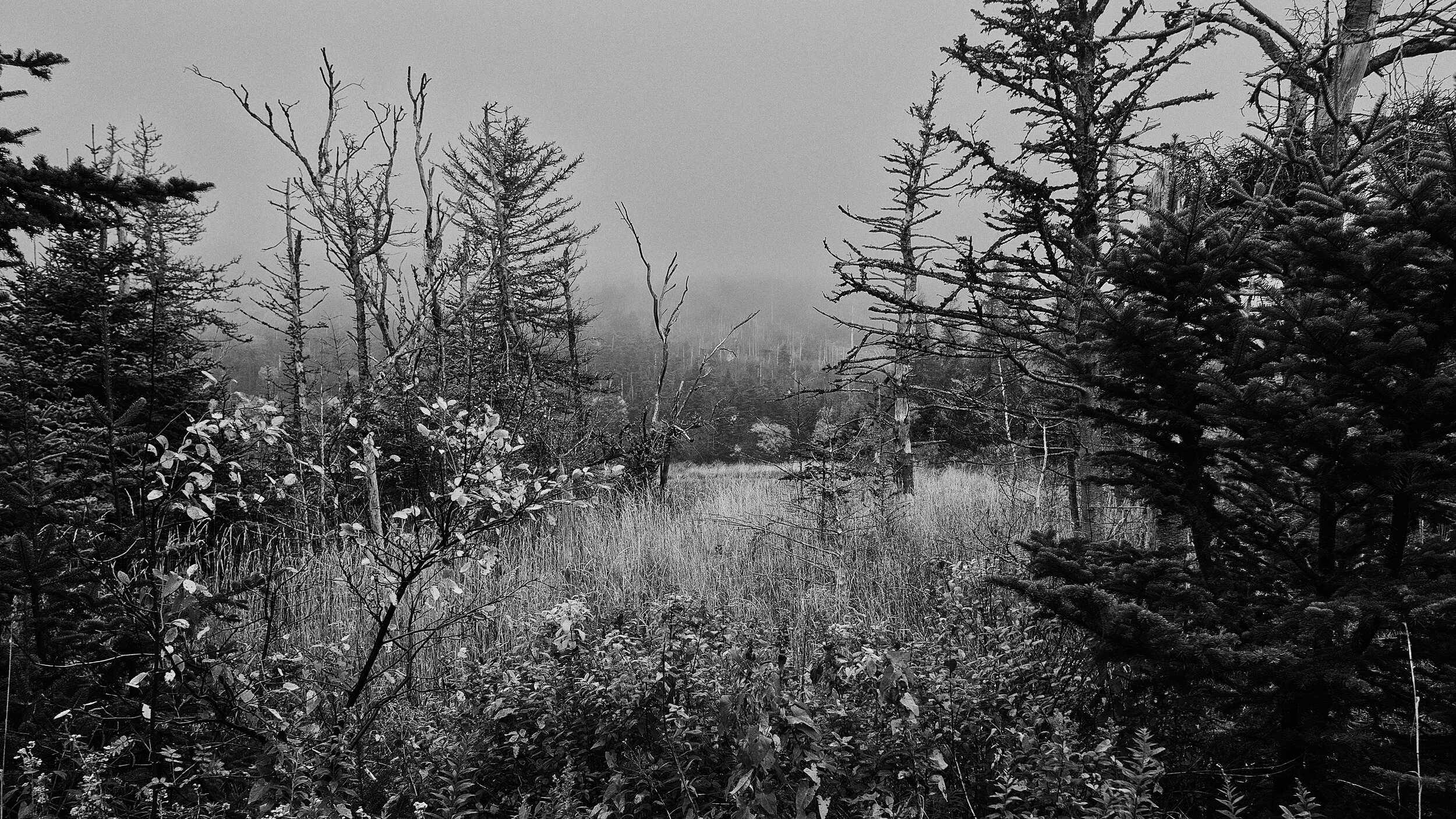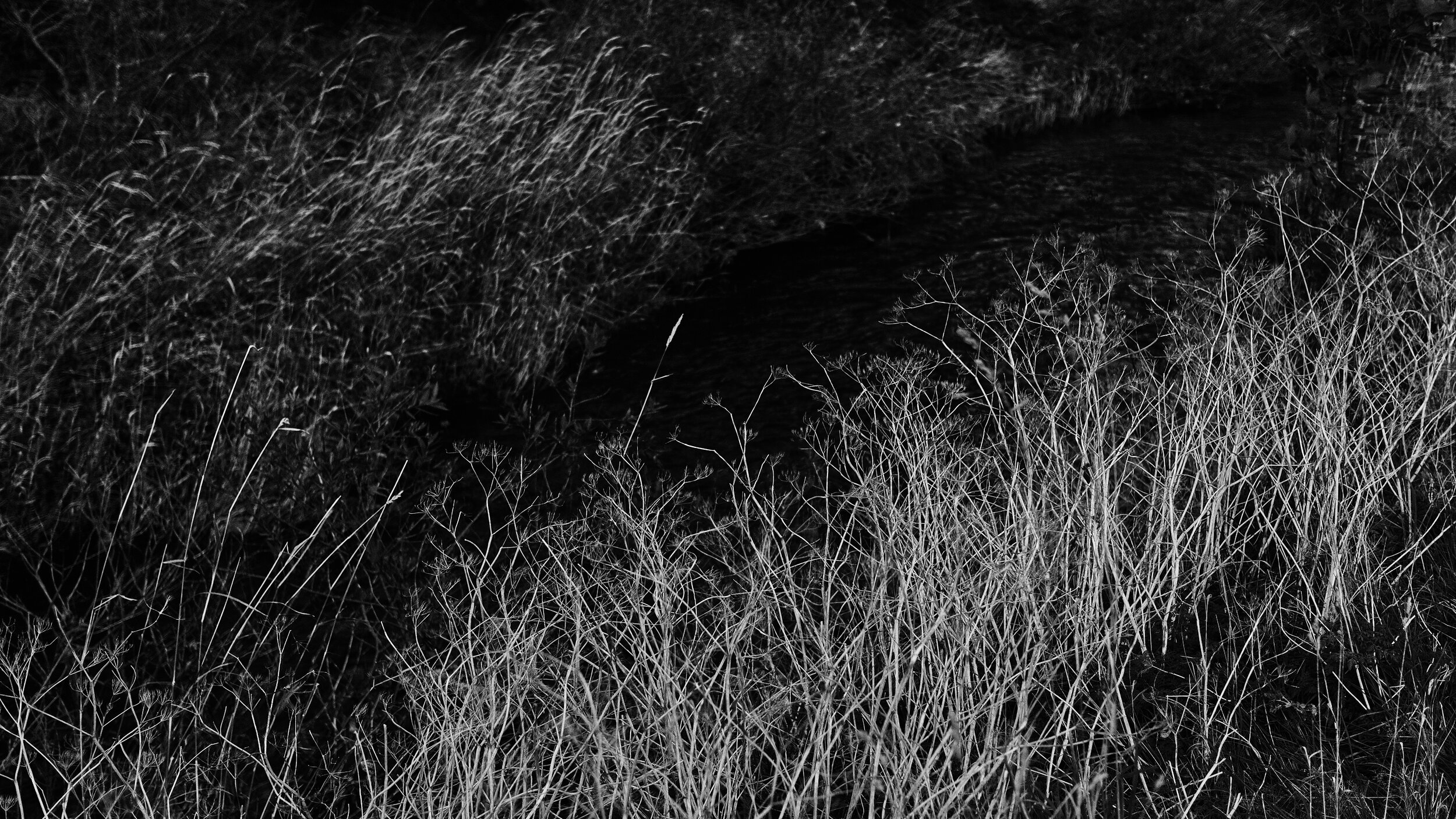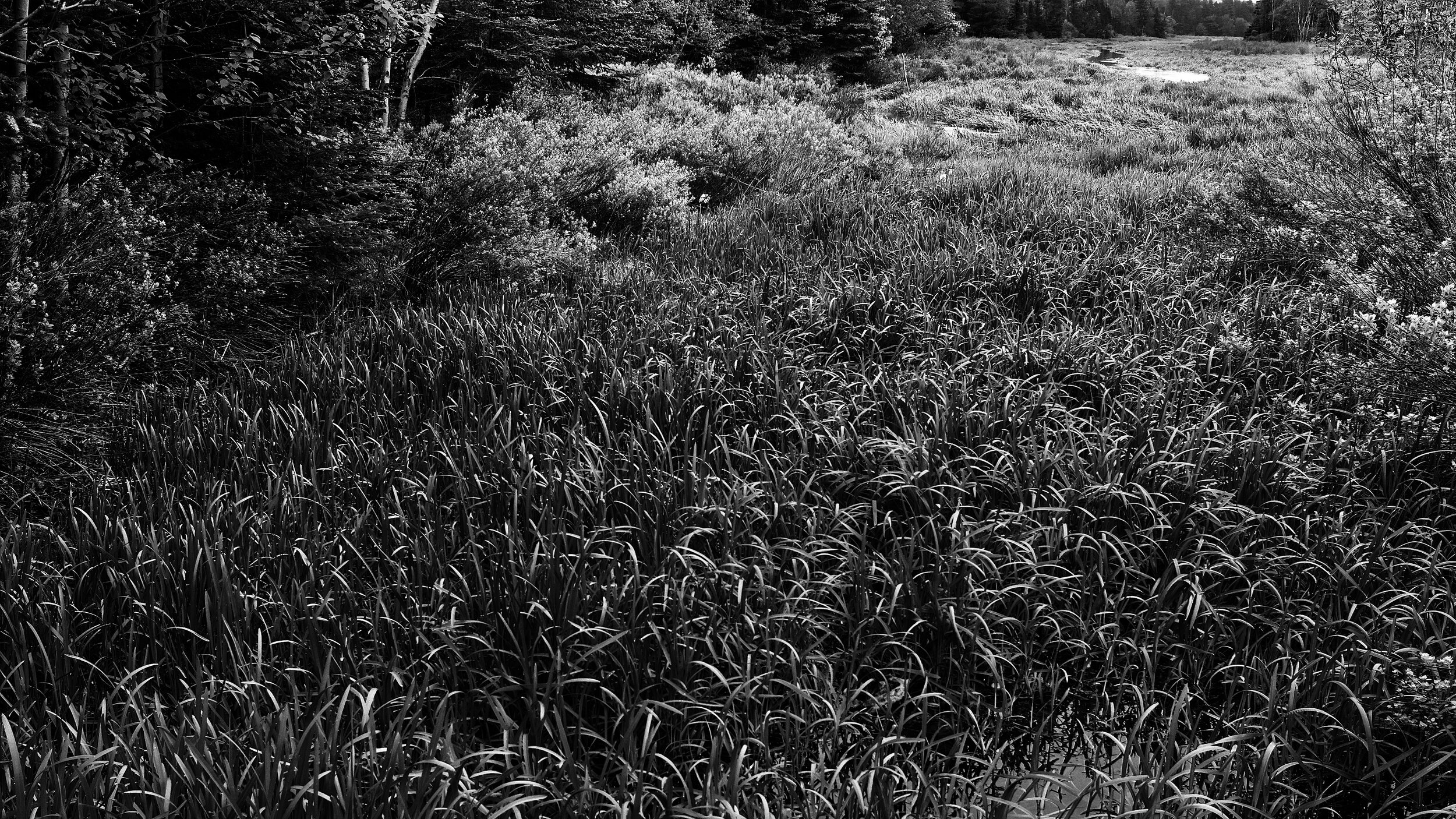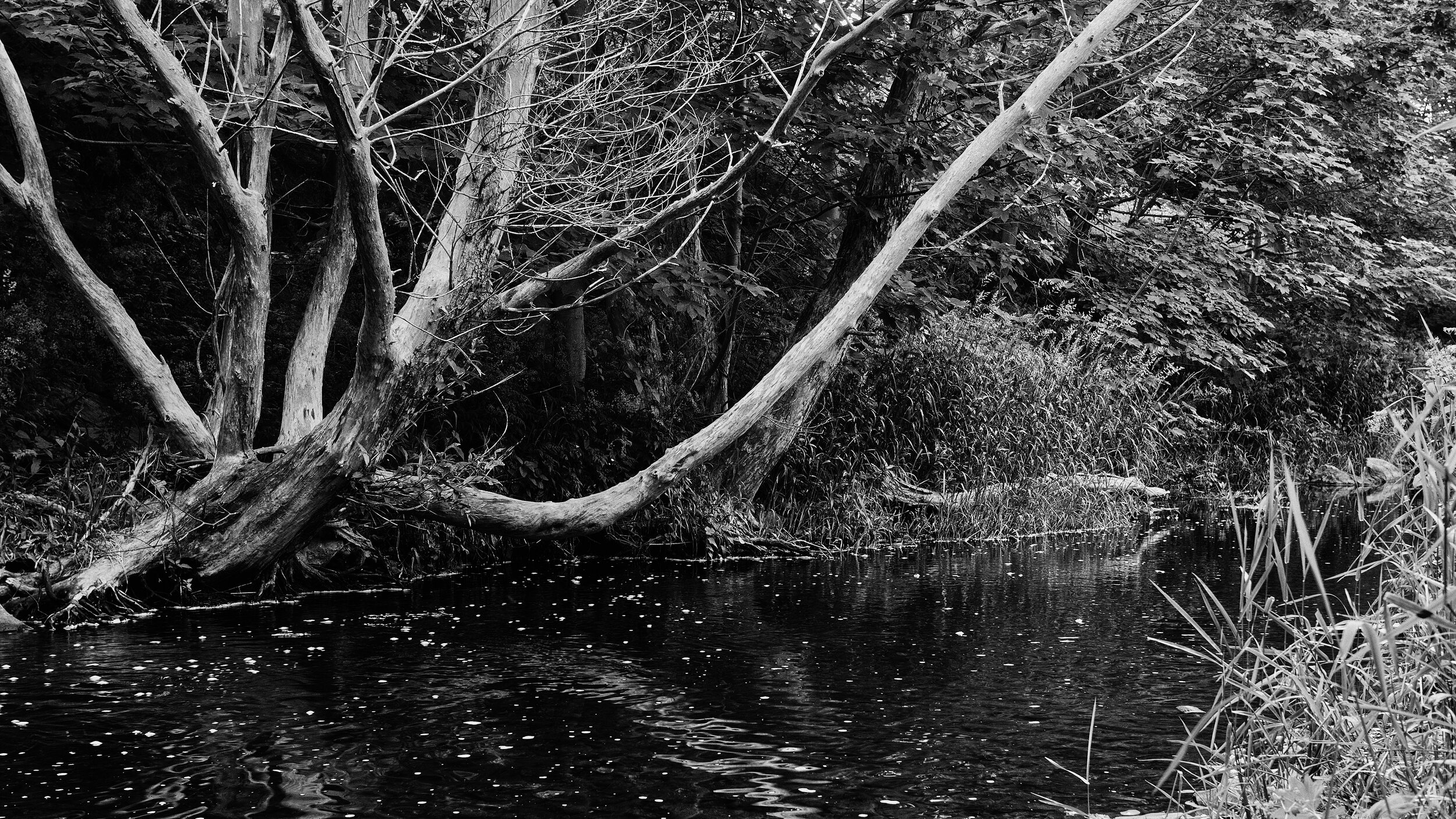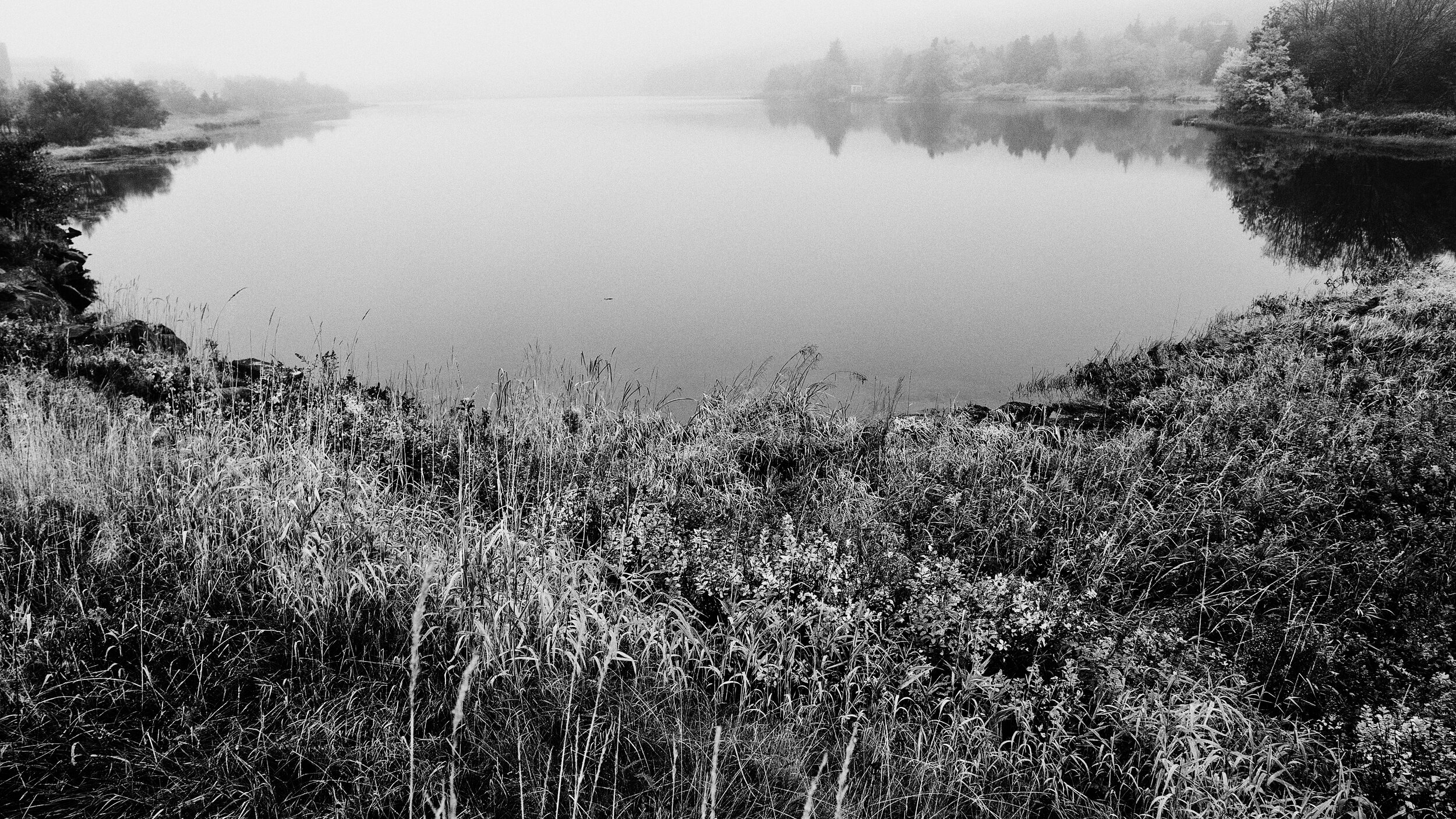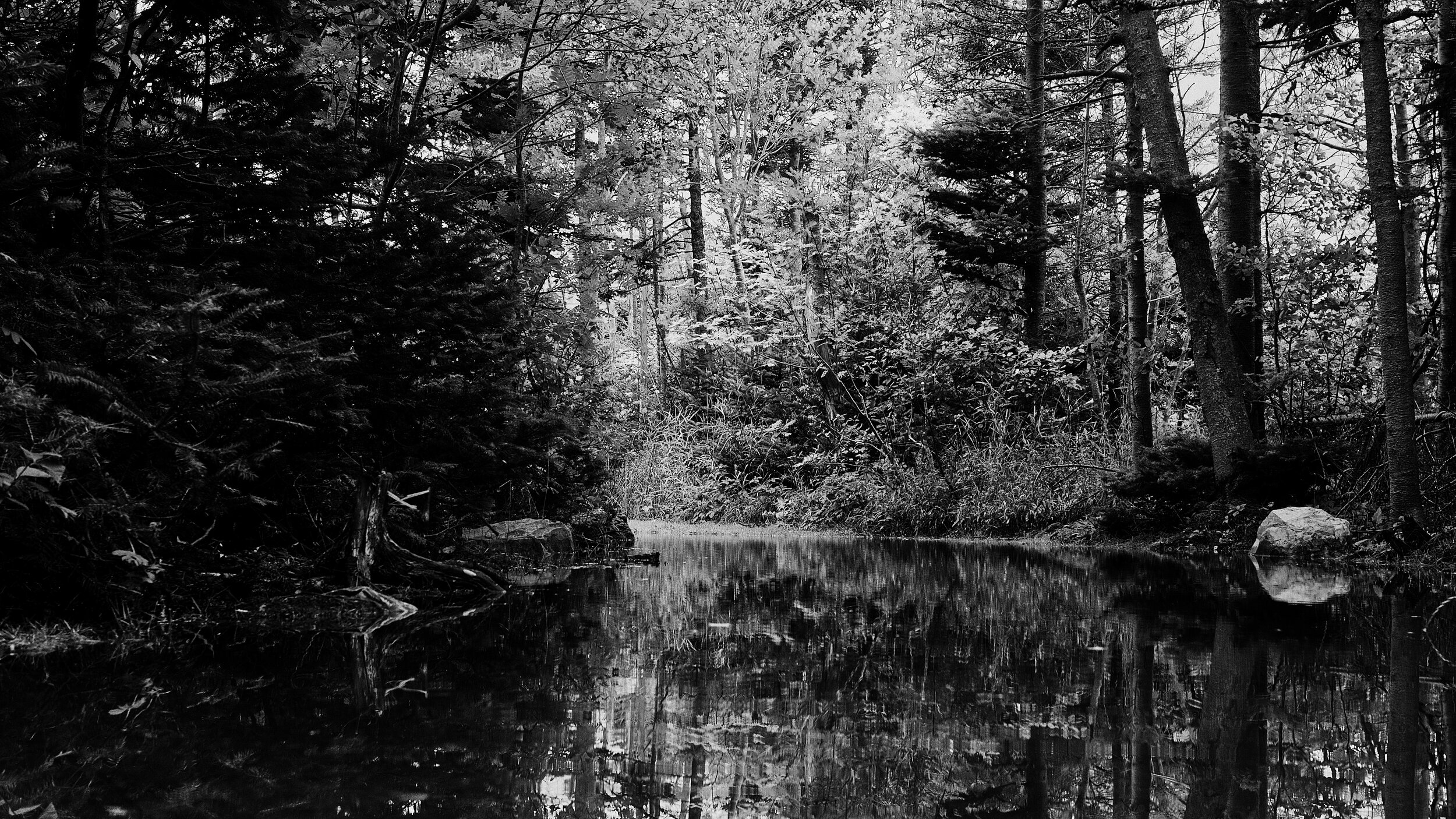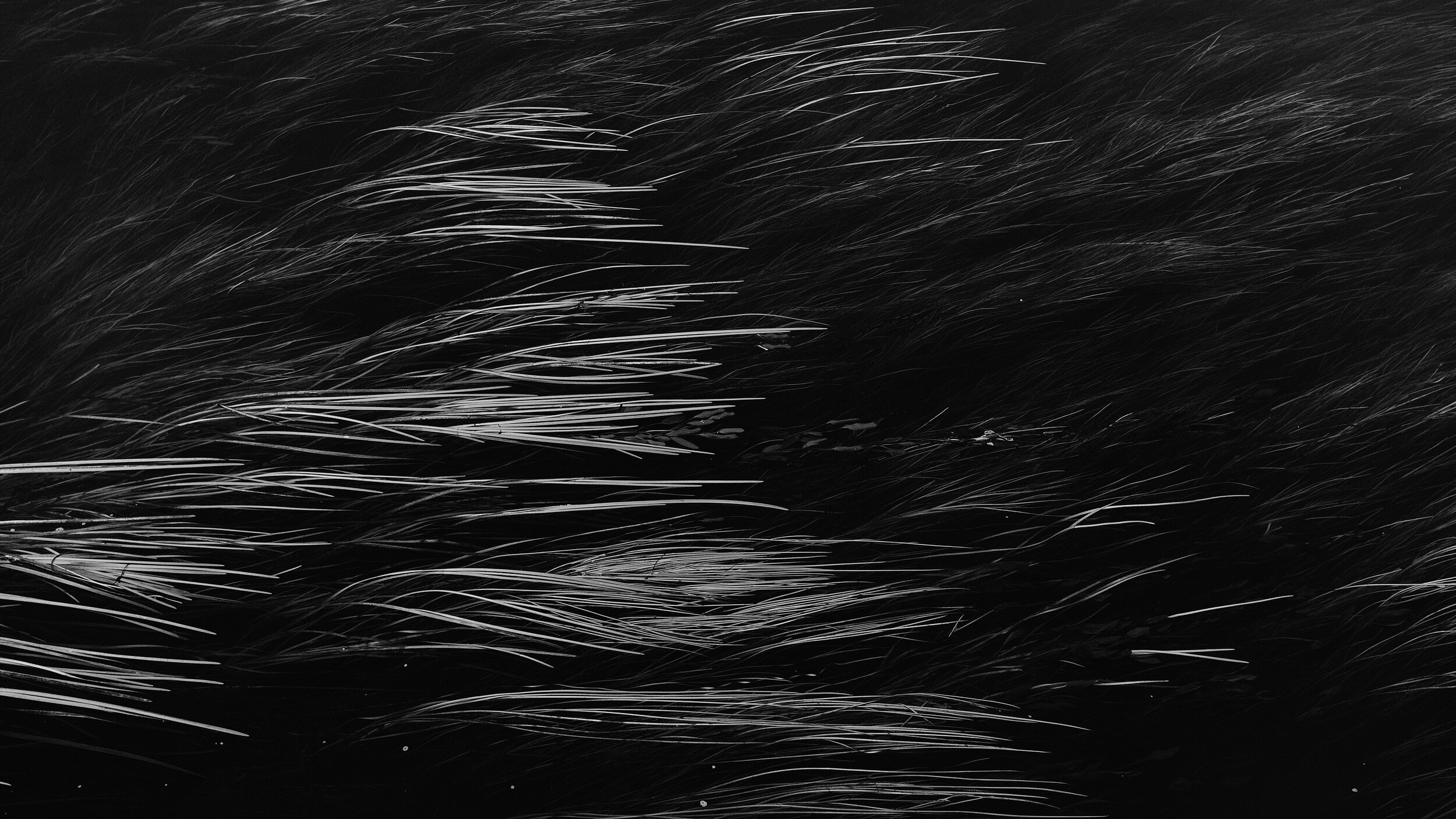🔊 Invasions
ON MARCH 18th, THERE WERE three presumptive cases of COVID-19 in Newfoundland and Labrador. That day, the government declared a public health emergency. The university I work at issued a work-from-home order. The schools were already closed.
I watered my office plants and took my laptop home. On that day in March, we were all thinking of this pandemic in terms of weeks – not months.
By next Monday, March 23, there were 24 confirmed cases and the restaurants, hair salons, and retail shops closed. A week later, there were 152 cases. That was the beginning of the pandemic.
***
Four of us live in a two-bedroom row house – bright green with an old-fashioned red storm door. You can keep that door half opened with a hook fastener. Step outside on the sidewalk, and there is the harbour and the Cabot Tower on top of the Signal Hill. We knew it would get a little tight with all four of us working or taking classes from home, but it felt safe and cosy. What we didn’t expect was an invasion of co-workers, international colleagues and, sometimes, complete strangers.
Every barrier separating work from home was crumbling under the onslaught of Zoom meetings. It became acceptable to schedule video-calls at seven in the evening; to ask for house tours. My inbox was littered with invitations to zoom cocktails, zoom poetry readings, yoga classes, and, of all things, zoom mindfulness and breathing exercises… I needed an out. We all needed an out.
***
Rennie's River pours out of Long Pond and three kilometers later it empties into the Quidi Vidi Lake. It meanders through some of the most affluent neighbourhoods in the city. A trail runs along the river and around both lakes. The entire walk is just over 12 kilometres long. In April, as the frequency of online meetings grew exponentially, that river trail became my escape route.
I am a photographer. The number of frames I made along that river was one curve I was not about to flatten. In the meantime, our viral nemesis was doing what viruses do so well - it was spreading.
South African virologist Ed Rybicki from the university of Cape Town calls viruses "organisms at the edge of life."
"Now viruses in terms of molecular biology are indisputably alive, where a lot of classic biologists would tell you that they are not because they don’t move and don’t have a classic metabolism. That’s completely beside the point, what they do is they get inside the cells and they take them over. That’s the virus. That’s the virus actualizing itself," he said in a Skype conversation we had one afternoon.
He makes viruses exciting and fascinating: “Do you know there are about 10 to the power of 31 virus particles on this planet? If you put them all end to end, they would stretch for 106 million light years. That’s between here and the next galactic supercluster. So literally, there are more of them than everything else put together in terms of genetic diversity. So this concept that they are minor organisms… They are literally the most numerous organisms on the planet."
He pointed out that everything in the world has a viral infection. As many as 80 percent of organisms in the sea die from viruses, but they also affect our food quality, and degrade crop yields, for example.
After my conversation with Dr. Rybicki, as I walked past young reed shoots on the river banks, I couldn’t help but think that the viruses were outsmarting us. We transport them around the globe in the bilge water of ships*, on tires, and in fruit crates. And climate change makes it easier than ever for us to encounter new viruses and their animal carriers.
"The moment you put species together that have not been together commonly before, so humans encroaching on anywhere, humans developing livestock culture as in the moment we domesticated anything, we caught their viruses. Smallpox almost certainly came from an animal, it could have been camels. Measles almost certainly came from animals. The moment you put things together you get viruses passed around," he said.
It did not take long for the pandemic routine to set in. Social distancing, more frequent hand washing, and lockdown measures quickly became a part of our lives. As I would leave the house for my morning walk along the river, to my usual check of keys, wallet, phone and camera, I added the mask. Dr. Rybicki is passionate on the subject of masks.
"If you take a look at the photographs from 1918, there are a lot of people in masks back then. Why are people so unbelievably stupid when it comes to wearing masks now? Did you know that in the Southern Hemisphere we haven’t had a flu season this year? We should have had a flu season already from April, May, June. We haven’t had one because it turns out that masks and isolation protect really, really well against flu. It’s a mask with about three layers on it that works, but trying to get that over to civilians and telling them that a mask is actually worn above the nose, not below and definitely not on the chin or on the forehead either. That sheer stupidity of people on masks is what worries me. Wear a mask!"
***
Along the Rennie’s Mill Road, on my way to the river, I discovered a small plaque on a gate about three blocks from our little green house. It’s attached to a stately Second Empire-style mansion with mansard roofs and a solid facade. The plaque tells you that the house used to belong to the inventor of a very different, but no less problematic mask. It marks the home of Dr. Cluny Macpherson–a respected doctor, who went overseas with the Royal Newfoundland Regiment at the beginning of the First World War. At the time, Newfoundland was not a part of Canada, not until 1949. The Royal Newfoundland Regiment has a special place of pride here to this day.
One rainy day, when the walk was out of question, I called Dr. Tim Cook, a historian at the Canadian War Museum, to find out more about gas warfare and the invention of the mask.
"The Canadian division, which was raised in August and September of 1914, went overseas and about 30,000 Canadians were a part of that first Canadian contingent and about 18,000 of them went to the Western Front in February of 1915 and, of course, there they encountered that horrific, industrialized warfare: the rapid firing machine guns, the artillery that could kill from 5-6 km away, everybody advancing overland was cut down by mass fire and so they went into trenches that formed on the Western Front. The Germans were trying to break that stalemate and they came across the idea of weaponizing gas."
In May and June, the spring waters ran high and the Rennies River became my own, personal, three-kilometer-long trench helping me prevent zoom sessions from invading every waking hour of my life. A stalemate of sorts.
Back in the real trenches of the First World War, the use of gas was met with outrage.
"The Germans were seen as having slipped into a diabolical realm of killing soldiers not with weapons but as if they were insects, by gassing them. Now, I think later on in the war, when everyone was using gas, there was a bit of a sense that killing is killing and in fact gas was less lethal than bullet shells, or shrapnel or shell splinters and yet there always remained something inhuman, inhumane about gas. It didn’t seem sporting. It didn’t seem like a weapon that allowed the defender to have any chance of survival, but that too is wrong because very quickly the soldiers of the allied forces and the Germans introduced gas masks and respirators to protect themselves"
That’s where the resident of 65 Rennie’s Mill Road enters the scene. Dr. Cluny Macpherson happened to be in England when the Germans unleashed the gas causing absolute terror among the troops. "Remember on the 22nd of April two French divisions fled in the face of this poisonous, lethal, lung searing gas and there was a fear that the Germans had more of this and that they would simply gas their way to victory," said Dr. Cook.
"Almost immediately in England, the women of England began to produce these cotton gas masks a bit like what we see today with COVID-19. And Cluny Macpherson was a part of that. He realized that while a cloth held over mouth and a wetted cloth helped in some way, it really wasn’t a form of protection. And so he did introduce a canvass bag that went over the head. It’s a very strange looking device. It looks a bit like a paper garbage bag, the fabric was chemically treated and they were two eyelids to look through. Initially just one, but later two."
The mask worked. It was uncomfortable and it caused skin rashes and burns, but it provided a lifeline in a whole new kind of warfare. It’s hard to imagine the fear and the discomfort the soldiers had to endure. The trees along the Rennie’s River were finally unfurling their young leaves and I kept thinking about that spring of 1915.
"One of the things the armies found in the First World War is that they had to teach soldiers how to use gas masks. Now, I think we would understand that today in the middle of the crisis that we are now in that you can’t simply issue masks – there need to be rules and regulations on when to use them and when to stop using them," said Dr. Cook.
By 1917, every army was using gas. The improvements in gas mask technology matched the development of ever deadlier gases. The green clouds of chlorine were replaced with phosgene - an invisible, and much more potent gas. There were gases that induced vomiting and sneezing. Gases were mixed in ever deadlier combinations and soon were fired in shells rather than released into the prevailing winds.
"The most effective casualty causing agent was the mustard gas which the Germans introduced in the summer of 1917. And it was a very different type of gas. It burned and blistered the skin, it blinded soldiers, often temporarily, but it was terrifying in that it was a persistent gas so the way the chlorine and phosgene tended to dissipate on the battlefield with the strong wind after few hours, mustard gas remained lethal in the mud for days and sometimes weeks."
Dr. Cook pointed out that the treatment gassed soldiers received once they returned to Canada was far from supportive and many were denied pensions. "They could not prove that they had been gassed because gas was everywhere. It hadn’t been recorded. They suffered through life, often a life much shortened because of their chemical poisoning and I think that remains a very dark mark on how we treated these veterans who survived such difficult conditions on the Western Front," he said.
Newfoundland’s fickle spring finally arrived sometime in June. I don’t remember such lushness along Rennie’s River in all the years we have lived in St. John’s. On June 8, with 11 consecutive days without new COVID-19 cases, we moved to a less restrictive Alert Level 3. The days and my walks were getting longer. As I walked by quaking aspens and birches covered in their new, impossibly green leaves, I realized that heritage panels along the trail told only a part of the river’s story. The other, natural, part was right in front of me, but I didn’t know how to read it. My systematic acquisition of botanical knowledge stopped in grade four with my school herbarium, but this was a pandemic and we were all encouraged to use this time to expand our knowledge base. At this point in the pandemic, I have tried learning Dutch (Ik drink melk.); my younger daughter and I made it half way through an online drawing course; and I had watched a series of webinars about visual storytelling. With these self-improvement successes in mind, I armed myself with a guide and a plant identifying app. The app soon alerted me to another kind of an invasion that was spreading all along the river banks. That invasion started like many virus takeovers, masquerading as harmless and even beautiful species.
I called Todd Boland, the horticulturalist at the Memorial University Botanical Garden to help me understand what is going.
"We have one of the greatest diversities of non-native species of anyone in North America," he said. "Fully a third of plants on the island of Newfoundland are non-natives."
Most of these plants arrived on fishing vessels that used gravel as ballast that the crew would pick up in England and dump here in Newfoundland once their holds were full of fish. The fishing seasons coincided with growing seasons, so the seeds mixed with the gravel would arrive just in time to put forth shoots sprout. The invaders lost no time. As people moved inland, they came along for the ride. I started to recognize the clumps of goutweed and Japanese knotweed along the river banks. In St. John’s, the spread of invasive species is most obvious along the city’s rivers. Those highly desirable river properties turned out to be just as popular with the invasive plants as they were with the city elites. And some of them turned out to be quite nasty neighbours.
"Big plants such as Japanese knotweed, they die in winter and basically disappear into the ground therefore, because they shaded out so many plants around them, this provides for a great opportunity for erosion to take place and we are seeing that," said Boland. If you walk along the river after a heavy rain, you will see it turn brown with soil that washes off along the way. And that's not all. Boland explains that the invasive species create monoculture that in turn creates poor habitat for insects and birds feeding on insects. The entire biodiversity of the river system eventually gets degraded. "So what you basically created is a desert. It’s a green desert. It’s still green. It’s living, but from a biological point of view, it’s like a desert."
If you squint as you stand on the little bridge over Leary’s brook just before it enters Long Pond, the field of reed canary grass does look a bit like sand dunes.
The early settlers did not only bring unwanted invaders with them. They also brought along familiar trees. For those poor beeches, oaks, horse-chestnuts and lindens, getting inside the Newfoundland bubble wasn’t so easy. Dr. Carissa Brown, a biogeographer at Memorial University of Newfoundland sympathizes with those newcomers struggling to put down their roots.
"A lot of these species are the species that have a root system that has adapted to deeper soil. If you can imagine a typical tree of life picture. There is sort of a net of roots that come down in that image. That’s what a lot of temperate or warmer adapted species have for a root system. The trees that are adapted to living here like black spruce or balsam fir have a system that you can think of more like spider legs coming out. And so they can grab into a rocky soil," she said.
As if terrible weather and poor soil were not enough, human invasion of the river banks encourages all the wrong trends.
"The watersheds throughout the Avalon have some challenges for sure," says Dr. Brown acknowledging that there are lots of natural disturbances such as ice and water flow that make it easier for invasive species to establish. But she doesn't let us off the hook. "Our watersheds here on Avalon go through a number of municipalities that have different kinds of rules about how much of a buffer you need to leave. So in some areas you need quite a protective 15 or 30 meters along the edge of the river and sometimes you drive past rivers on Avalon and you see that diggers come through and there is gravel right up to the river edge. That area really does need to be undisturbed to keep that natural biodiversity healthy to prevent things like erosion, to prevent things like invasive species coming and establishing there instead."
On July 1, for 34 days in a row, Newfoundland and Labrador recorded no new cases of COVID-19. Along the banks of the Rennie's River, forget-me-nots made their appearance in time for the Memorial Day. This year, for the first time in memory, there were no crowds at the National War Memorial. That afternoon and evening, Canada Day passed quietly without fireworks.
Walking along the river, I paid more attention than ever to the changes along its banks. The rains at the beginning of July muddied the waters and brought along swarms of mosquitos. In August, it was hot. Hotter than any August I remember in the past 12 years. We all enjoyed it, but in the back of my mind, it didn’t feel right. Not least, because the banks of Quidi Vidi lake never filled with thousands of Regatta revelers. A thing that hasn’t happened since 1940 and the Second World War.
***
Dr. Katie Clow at the Ontario Veterinary College at the University of Guelph studies ticks and tick-borne diseases. She is particularly interested in how ticks and other insects invade new habitats and infect new hosts. Black-legged ticks are spreading across the Maritimes, in southern Quebec and southern Ontario, and in British Columbia. But it’s not just ticks. "So we have tons of examples from our past: nipah virus and hendra virus, ebola, lots of very significant human health threats that have emerged from animal sources that have sort of key predisposing factors," she said. The spread of insects and viruses they carry into new habitats is happening around the world fueled by climate change, land use, and human activity. This year, in the middle of the COVID19 pandemic, there were reports of reemergence of dengue fever and yellow fever in southern Europe. There are lessons this pandemic is teaching us about the world we are living in. One of the most important ones is that we share this planet.
"A lot of my work revolves around one health which is this concept that human health, environmental health, and animal health are very interconnected and we need to look at the entire system to understand what’s going on and also create effective solutions," Dr. Clow said. "I hope that we really learn from this pandemic what some of those precipitating factors are, to look at them holistically and think about what sort of changes we might be able to make to really get at the root source as to why the diseases are emerging and why they are changing."
In September and October, there are new cases of COVID 19 in the province. We are on an island and borders, the natural ones and now the administrative ones as well, are hard to cross. These new cases are travel-related and so far there are no community transmissions. The fall is in the air along the river. You can smell it.
At home, M and I were introducing our teenage daughters to movies from the 80s and 90s: Beaches, Junior, Hello Again, Big Business, Sister Act... I tried to watch The Matrix with the 17-year old, but even I had to admit that it hadn’t aged well. There is a scene there meant to be deep. Agent Smith, an artificial intelligence construct, bemoans human lack of self-control: "You move to an area and multiply and multiplay until every natural resource is consumed. The only way you can survive is to spread to another area. There is another organism on this planet that follows the same pattern... A virus. Human beings are a disease... You are a plague..."
The rains have swollen the waters of the Rennie’s River into an angry torrent. Just as Tod Bolland and Carrisa Brown predicted, the river runs muddy as it erodes its banks. It floods sections of the trail. The leaves are changing colour. The mornings are colder. Fog hangs over the water. We are still hunkered down in our personal trenches resisting a pandemic. We have recorded another death in the province. The conversations about the economic recovery, I imagine, are not unlike those after the World Wars. What is the new normal going to look like? Should we aim for a great transformation? What about universal basic income? A green economy?
I keep thinking that Agent Smith is, of course, wrong. Yes, our evolutionary imperative is no different than that of a virus or any other organism - we, too, want to pass on our genes to the next generation. But we have also evolved long past that kind of simplicity. We make complex choices that are changing the planet we live on. It is true that we are invading every corner of the biosphere and that we may not be able to survive that invasion. And yet, that, too, is a choice.
*A knowledgable listener pointed out that, at least in theory, ships are not likely to transport viruses in bilge water. These days there are many safety practices and regulations in place to prevent that from happening. Ballast water is a more likely culprit. Sorry for the confusion.
NOTE: This essay is an adaptation of a script for CBC’s Atlantic Voice radio documentary that aired on November 15, 2020. As I was finishing the script, a controversy over the trail erupted in the media and on social networks. The City of St. John’s, as a part of their Bike St. John’s Master Plan, is planning to significantly widen and pave sections of the trail, removing trees and vegetation in the process. At the same time, they have also launched a flood mitigation consultation process that, if anything, will further degrade the biodiversity along the river banks. On top of that, the construction of a new mental health hospital in the middle of the Rennie’s River watershed on a flood plane will have a massive impact on the riparian zone. In a letter to the editor The Salmonid Association of Eastern Newfoundland pointed out all of these problem. A comment under a social media post about that letter said: “Ah yes. When salmon are more important than people,” and it struck me that right there is the crux of our current climate emergency. We do not see the salmon, the trout, or the river itself as having any say at all in this conversation. It’s always about us and that needs to change.
